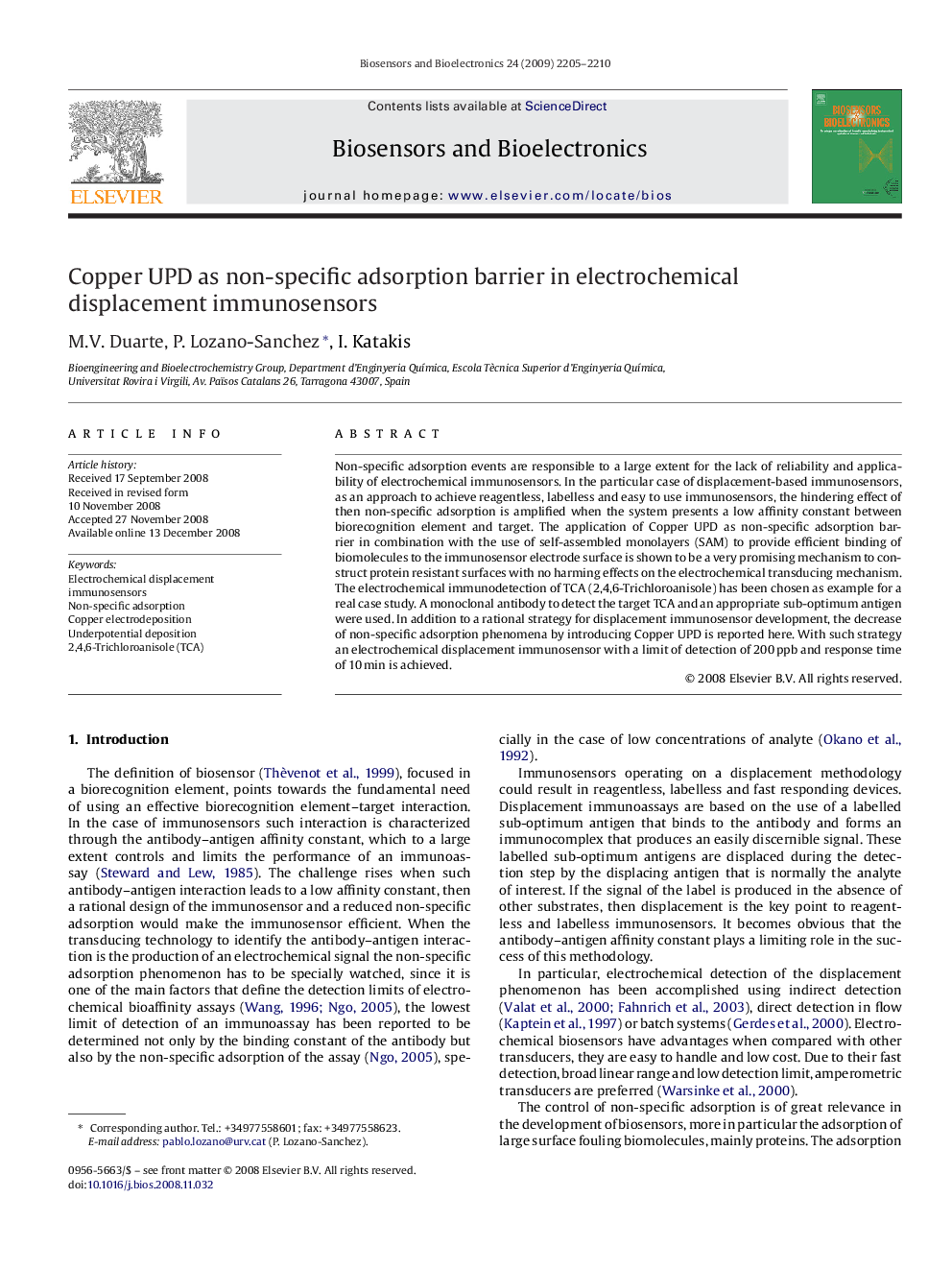| Article ID | Journal | Published Year | Pages | File Type |
|---|---|---|---|---|
| 869786 | Biosensors and Bioelectronics | 2009 | 6 Pages |
Non-specific adsorption events are responsible to a large extent for the lack of reliability and applicability of electrochemical immunosensors. In the particular case of displacement-based immunosensors, as an approach to achieve reagentless, labelless and easy to use immunosensors, the hindering effect of then non-specific adsorption is amplified when the system presents a low affinity constant between biorecognition element and target. The application of Copper UPD as non-specific adsorption barrier in combination with the use of self-assembled monolayers (SAM) to provide efficient binding of biomolecules to the immunosensor electrode surface is shown to be a very promising mechanism to construct protein resistant surfaces with no harming effects on the electrochemical transducing mechanism. The electrochemical immunodetection of TCA (2,4,6-Trichloroanisole) has been chosen as example for a real case study. A monoclonal antibody to detect the target TCA and an appropriate sub-optimum antigen were used. In addition to a rational strategy for displacement immunosensor development, the decrease of non-specific adsorption phenomena by introducing Copper UPD is reported here. With such strategy an electrochemical displacement immunosensor with a limit of detection of 200 ppb and response time of 10 min is achieved.
